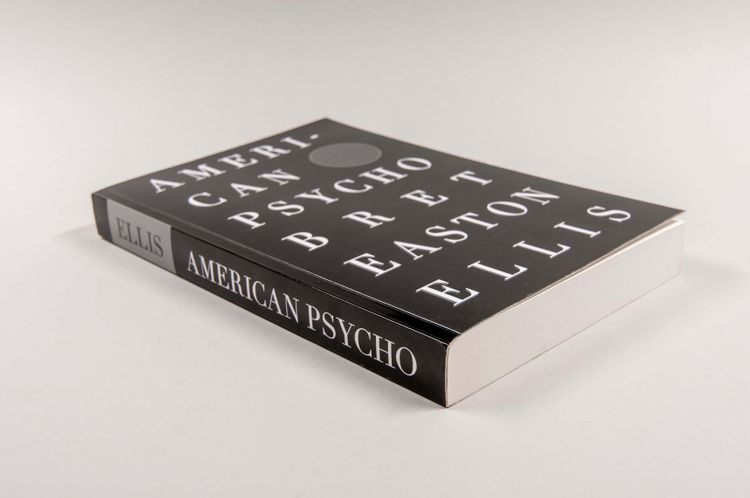“Google reads our emails, garners information from our personal mes sages and uses that profiling strategy to select ‘relevant’ ads. It then displays those ads on the screen next to the very emails from which the information was initially taken.
American Psycho was created by sending the entirety of Bret Easton Ellis’ violent, masochistic and gratuitous novel American Psycho through GMail, one page at a time. We collected the ads that appeared next to each email and used them to annotate the original text, page by page. In printing it as a perfect bound book, we erased the body of Ellis’ text and left only chapter titles and constellations of our added footnotes. What remains is American Psycho, told through its chapter titles and annotated relational Google ads.
We were most curious how Google would handle the violence, racism and graphic language in American Psycho. In some instances the ads related to the content of the email, in others they were completely irrelevant, either out of time or out of place. In one scene, where first a dog and then a man are brutally murdered with a knife, Google supplied ample ads regarding knives and knife sharpeners. In another scene the ads disappeared altogether when the narrator makes a racial slur. Google’s choice and use of standard ads unrelated to the content next to which they appeared offered an alternate window into how Google ads function—the ad for Crest Whitestrips Coupons appeared the highest number of times, next to both the most graphic and the most mundane sections of the book, leaving no clear logic as to how it wasselected to appear. This ‘misreading’ ultimately echoes the hollowness at the center of advertising and consumer culture, a theme explored in excess in American Psycho” (Mimi Cabell, “American Psycho,” website).
The inserted ads update the brand and consumer world of the 1980s and at the same time document a period of media history upheaval, namely the conversion from analog to digital around 2010: the original Bateman still uses a video recorder, while the new version offers MP3 players. In general, Cabell and Huff’s entire project can now be considered an important media archaeological study, because Google’s ad algorithm that they tried to track down in 2010 is now already historic: since 2017, Google no longer scans emails, but instead bases the ads on the user’s online activity. The algorithm active at the time, as condensed in American Psycho, embodies par excellence the logic of “linguistic capitalism,” in which a price is assigned to every keyword that triggers advertising, which is why one can ask “how much money Google earned from the 819 ads in the making of the book” (Karl Wolfgang Flender, “Reading an Algorithm in Reverse”).
As American Psycho was initially published by Cabell and Huff along with a PDF, it also reflects on the possibilities and limitations such post-digital hybrids incline. The erasure of Ellis’s text was achieved by rendering its font color to white. This turns the source text invisible in the printed version but allows for a complete recreation of the novel from the PDF by simply copying and pasting it to a different text editor—thus turning the digital version of the artistic project to a container for subversive filesharing.
